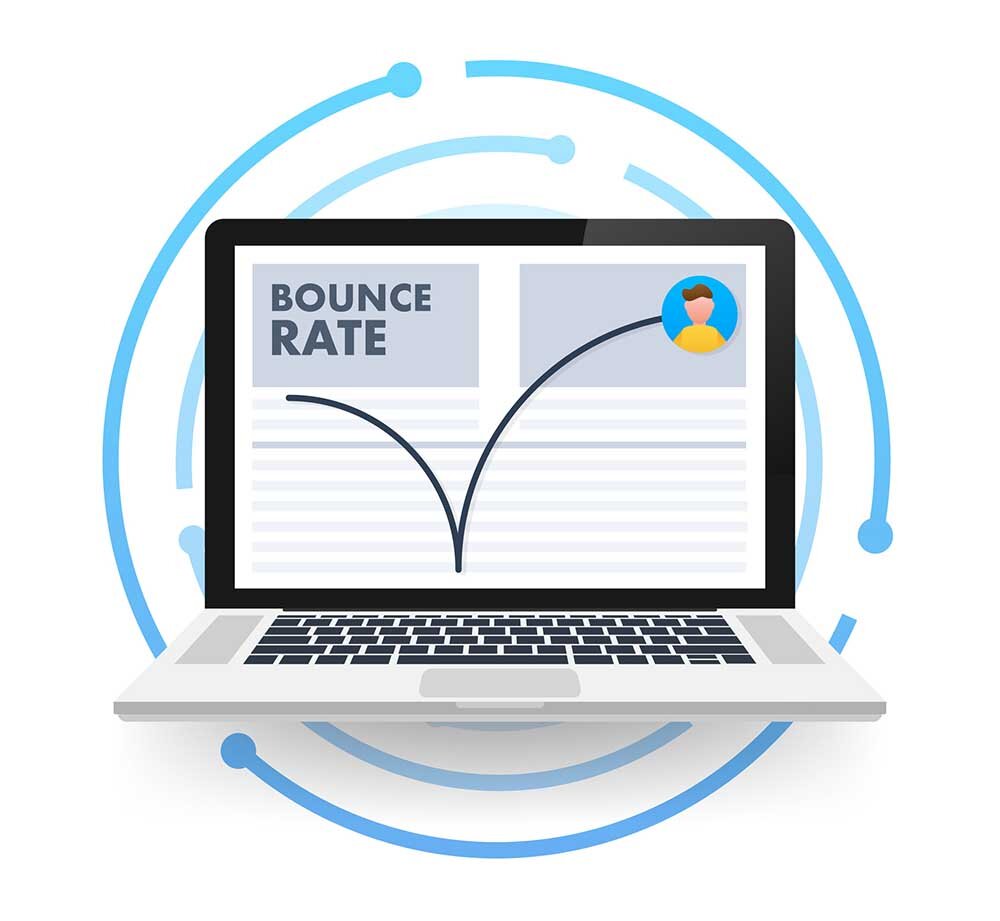Bounce rate is a measure of the number of visitors to a website who leave the site after viewing only a single page. It is expressed as a percentage of total visitors. A high bounce rate can indicate that visitors are not finding what they are looking for on the website, or that the website is not meeting their expectations.
Bounce rate does not directly affect rankings. However, a high bounce rate can indicate to search engines that visitors are not finding what they are looking for on your website, which can indirectly affect your rankings.
Search engines want to provide the best possible experience for their users, and if a large percentage of visitors are leaving a website quickly, it could be an indication that the website is not meeting the needs of its users. As a result, search engines may be less likely to rank the website higher in search results.
On the other hand, a low bounce rate can indicate that visitors are finding what they are looking for and spending more time on the website, which can be a positive signal to search engines.
It’s important to note that bounce rate is just one factor that search engines consider when ranking websites. Other factors, such as the quality and relevance of the website’s content, the website’s overall user experience, and the number and quality of external links pointing to the website, also play a role in determining rankings.
There are several ways to analyse a website’s bounce rate:
Use Google Analytics: Google Analytics is a free tool that provides a wealth of information about a website’s traffic and performance. To view the bounce rate for your website, go to the “Audience” section and click on “Overview”. The bounce rate for your website will be displayed at the top of the page.
Use other analytics tools: There are many other analytics tools available that can help you track and analyze your website’s bounce rate. Some popular options include Adobe Analytics, Mixpanel, and Crazy Egg.
Analyse specific pages: To get a better understanding of why visitors are leaving your website, it can be helpful to analyse the bounce rate for specific pages on your website. This can give you an idea of which pages are performing well and which pages may need to be improved.
Look at the overall trend: Instead of focusing on a single data point, it’s important to look at the overall trend of your website’s bounce rate. A high bounce rate can be normal for some websites, so it’s important to consider whether the rate is increasing or decreasing over time.
Compare to industry benchmarks: It can be helpful to compare your website’s bounce rate to industry benchmarks to see how it compares to other websites in your industry. This can give you a better idea of whether your bounce rate is normal or if there is room for improvement.
Here are some tips for reducing your website bounce rate:
Improve the user experience: Make sure that your website is easy to navigate and has a clean, professional design. Use clear headings and subheadings, and break up long blocks of text with images and other multimedia elements.
Use internal linking: Internal linking can help keep visitors on your website longer by providing them with more relevant content to read.
Optimise for mobile devices: With more and more people accessing the internet from their smartphones, it’s important to make sure that your website is mobile-friendly.
Use social media: Social media can help drive traffic to your website and keep visitors engaged. Share links to your website on social media platforms and encourage visitors to share your content.
Make sure your website loads quickly: Visitors are unlikely to stick around if your website takes too long to load. Make sure to optimize your images and eliminate any unnecessary code to improve load times.
Use clear and descriptive titles and meta descriptions: Make sure that your website’s titles and meta descriptions accurately reflect the content of your pages. This will help improve the click-through rate from search engine results pages and encourage visitors to stay on your website.
Employ an SEO agency: Digital Hype, an expert SEO agency, can help reduce the bounce rate on a client’s website by implementing a variety of strategies and tactics. Firstly, they can analyse the website’s user experience and identify any issues that may be causing visitors to leave the site quickly. This could include slow load times, confusing navigation, or irrelevant content. Once these issues are identified, Digital Hype can work to optimise the site’s design and functionality to make it more user-friendly and engaging.
Another key strategy for reducing bounce rate is to improve the website’s content. Digital Hype can help clients create high-quality, relevant content that is optimized for both search engines and human readers. This could include blog posts, articles, videos, and other types of content that are tailored to the client’s target audience and their interests.
In addition to optimising the website itself, Digital Hype can also help clients improve their online marketing efforts. This could include developing targeted advertising campaigns, social media marketing strategies, and email marketing campaigns that are designed to drive traffic to the website and keep visitors engaged once they arrive.
Overall, Digital Hype’s expertise in SEO and digital marketing can be invaluable in reducing bounce rate and improving the overall performance of a client’s website. By identifying and addressing issues with the site’s user experience, content, and marketing efforts, Digital Hype can help clients attract and retain more visitors, ultimately driving more conversions and revenue for their business.

